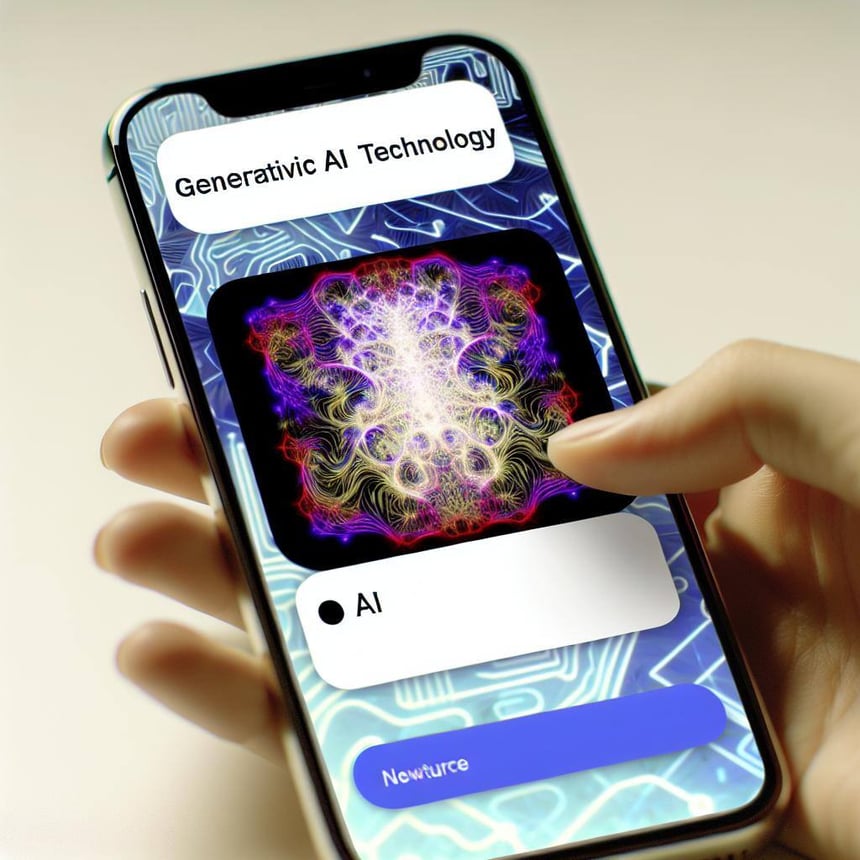Understanding Generative AI
Generative AI refers to a type of artificial intelligence that can generate new and original content, such as images, text, or even music. It is different from other forms of AI that rely on pre-existing data or patterns to make predictions or perform tasks.
Generative AI works by using algorithms to analyze and learn from a large dataset, and then generate new content that is similar to the examples it has been trained on. This process involves the use of neural networks, which are designed to mimic the way the human brain processes information.
By understanding the basics of generative AI, we can better appreciate the significance of Google's new feature and how it utilizes this cutting-edge technology.
Google's Innovative Approach
Google has always been at the forefront of technological innovation, and its latest feature is no exception. With their innovative approach to generative AI, Google has managed to create a tool that has the potential to revolutionize various industries and improve the lives of millions of people.
One of the key aspects of Google's approach is the extensive training of their generative AI models. These models are trained on vast amounts of data, allowing them to generate highly realistic and accurate content. This level of sophistication sets Google apart from other companies and ensures that its new feature is truly groundbreaking.
Furthermore, Google's new feature demonstrates its commitment to user experience and accessibility. The tool is designed to be user-friendly and intuitive, making it accessible to a wide range of users, regardless of their technical expertise. This approach reflects Google's dedication to making advanced technologies accessible to all.
Implications for the Future
The implications of Google's new feature are vast and far-reaching. By harnessing the power of generative AI, Google has opened up possibilities in various fields, including art, design, content creation, and more.
In the field of art and design, Google's new feature can assist artists and designers in generating new ideas and exploring creative possibilities. It can help automate repetitive tasks and provide inspiration for new projects. This has the potential to redefine the creative process and push the boundaries of artistic expression.
In the realm of content creation, Google's generative AI can help streamline the production of high-quality content. It can generate realistic images, videos, and text, saving time and resources for content creators. This can have a significant impact on industries such as advertising, entertainment, and marketing.
Moreover, Google's new feature has implications for the future of AI research and development. It showcases the advancements made in generative AI and encourages further exploration and innovation in this field. The possibilities are endless, and we can expect to see more exciting developments in the future.
Potential Challenges
While Google's new feature holds immense potential, it also presents certain challenges and considerations that need to be addressed.
One of the main challenges is ensuring the ethical use of generative AI. As technology becomes more advanced, there is a need to establish guidelines and regulations to prevent misuse or malicious intent. It is crucial to strike a balance between innovation and responsible use to avoid potential harm.
Another challenge is the potential for bias in the generated content. Since generative AI models learn from existing data, there is a risk of perpetuating biases present in the training data. This can lead to biased content generation, which can have significant implications in areas such as journalism, healthcare, and decision-making processes.
Addressing these challenges requires collaboration between industry leaders, researchers, policymakers, and the public to develop ethical frameworks and ensure the responsible deployment of generative AI.
Google's new feature represents a significant milestone in the field of generative AI. Its innovative approach and potential implications demonstrate the transformative power of this technology.
By understanding generative AI, appreciating Google's innovative approach, and recognizing the potential challenges, we can better comprehend the impact of this groundbreaking feature. As we move forward, it is essential to foster responsible use and continue exploring the possibilities of generative AI to shape a better future.



.jpg)






.jpg)



0 Comments